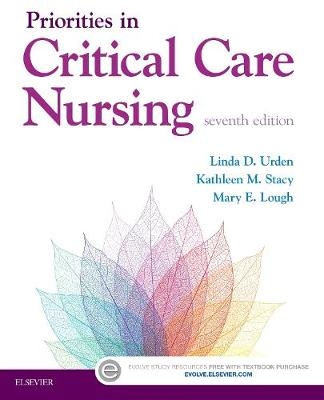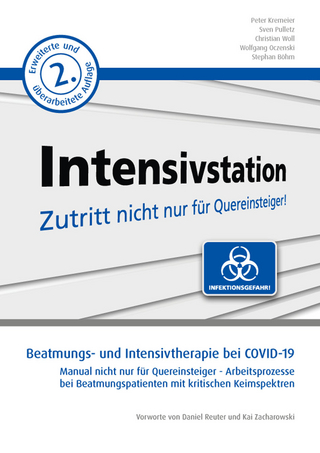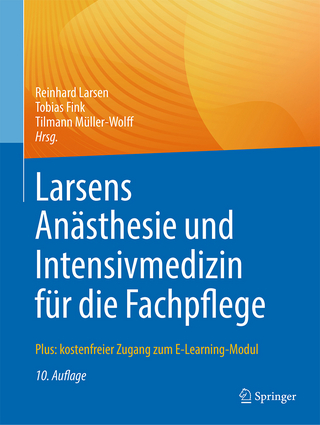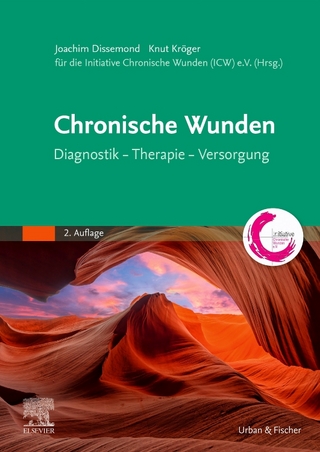
Priorities in Critical Care Nursing
Mosby (Verlag)
978-0-323-32085-6 (ISBN)
- Titel ist leider vergriffen;
keine Neuauflage - Artikel merken
Evidence-based approach offers the most accurate and timely patient care recommendations based on the latest and most authoritative research, meta-analyses, and systematic reviews available.
UNIQUE! Nursing Diagnosis Priorities boxes list the most urgent potential nursing diagnoses, with a page reference to the corresponding Nursing Management Plan.
Nursing Management Plans provide a complete care plan for every Priority Diagnosis that includes the diagnosis, definition, defining characteristics, outcome criteria, nursing interventions, and rationales.
Case studies with critical thinking questions test your understanding of key concepts and their practical applications.
Concept maps help students understand common critical health conditions, including acute coronary syndrome, acute renal failure, ischemic stroke, and shock.
Collaborative Management boxes guide you through the management of a wide variety of disorders.
Patient Education boxes list the concepts that must be taught to the patient and the family before discharge from the ICU.
Priority Medication boxes offer a foundation in the pharmacology used most in critical care.
NEW! QSEN Evidence-Based Practice boxes use the PICOT framework to cover a timely topic and the research that underlies current patient care.
NEW! TEACH for Nurses manual includes unique case studies, outlines, instructor resources, student resources, answer keys, and more.
NEW! PowerPoint slides with unfolding case studies have been updated to include interactive questions and sample handoff information in the ISBARR format for appropriate chapters.
NEW! Cultural Competency boxes provide information on basic cultural topics, including what cues to watch for and how to better provide culturally competent care.
NEW! QSEN Teamwork and Collaboration boxes offer concise guidelines for effective handoffs, assessments, and communications between nurses and other hospital staff.
NEW! QSEN Patient Safety Alert boxes highlight important guidelines and tips to ensure patient safety.
NEW! QSEN Internet Resources boxes identify key organizations and websites for both general critical care practice and for each specific body system.
NEW! Key points at the end of each chapter offer a quick study tool for students.
NEW! More-detailed objectives now include every disorder covered in the chapter.
NEW! Digital glossary on the Evolve companion site help to increase students' critical care nursing vocabulary.
Unit One: FOUNDATIONS IN CRITICAL CARE NURSING
1. Caring for the Critically Ill Patient
2. Ethical and Legal Issues
3. Patient and Family Education
Unit Two: COMMON PROBLEMS IN CRITICAL CARE
4. Psychosocial Alterations
5. Sleep Alterations
6. Nutritional Alterations
7. Gerontological Alterations
8. Pain and Pain Management
9. Sedation and Delirium Management
10. End-of-Life Care
Unit Three: CARDIOVASCULAR ALTERATIONS
11. Cardiovascular Clinical Assessment and Diagnostic Procedures
12. Cardiovascular Disorders
13. Cardiovascular Therapeutic Management
Unit Four: PULMONARY ALTERATIONS
14. Pulmonary Clinical Assessment and Diagnostic Procedures
15. Pulmonary Disorders
16. Pulmonary Therapeutic Management
Unit Five
NEUROLOGICAL ALTERATIONS
17. Neurological Clinical Assessment and Diagnostic Procedures
18. Neurologic Disorders and Therapeutic Management
Unit Six: KIDNEY ALTERATIONS
19. Kidney Clinical Assessment and Diagnostic Procedures
20. Kidney Disorders and Therapeutic Management
Unit Seven: GASTROINTESTINAL ALTERATIONS
21. Gastrointestinal Clinical Assessment and Diagnostic Procedures
22. Gastrointestinal Disorders and Therapeutic Management
Unit Eight: ENDOCRINE ALTERATIONS
23. Endocrine Clinical Assessment and Diagnostic Procedures
24. Endocrine Disorders and Therapeutic Management
Unit Nine: MULTISYSTEM ALTERATIONS
25. Trauma
26. Shock, Sepsis, and Multiple Organ Dysfunction Syndrome
27. Hematological Disorders and Oncological Emergencies
Appendix A. Nursing Management Plans of Care
Appendix B. Physiologic Formulas for Critical Care
| Erscheint lt. Verlag | 9.4.2015 |
|---|---|
| Zusatzinfo | Approx. 170 illustrations (160 in full color) |
| Verlagsort | St Louis |
| Sprache | englisch |
| Maße | 216 x 276 mm |
| Gewicht | 1270 g |
| Themenwelt | Pflege ► Fachpflege ► Anästhesie / Intensivmedizin |
| ISBN-10 | 0-323-32085-6 / 0323320856 |
| ISBN-13 | 978-0-323-32085-6 / 9780323320856 |
| Zustand | Neuware |
| Haben Sie eine Frage zum Produkt? |
aus dem Bereich



